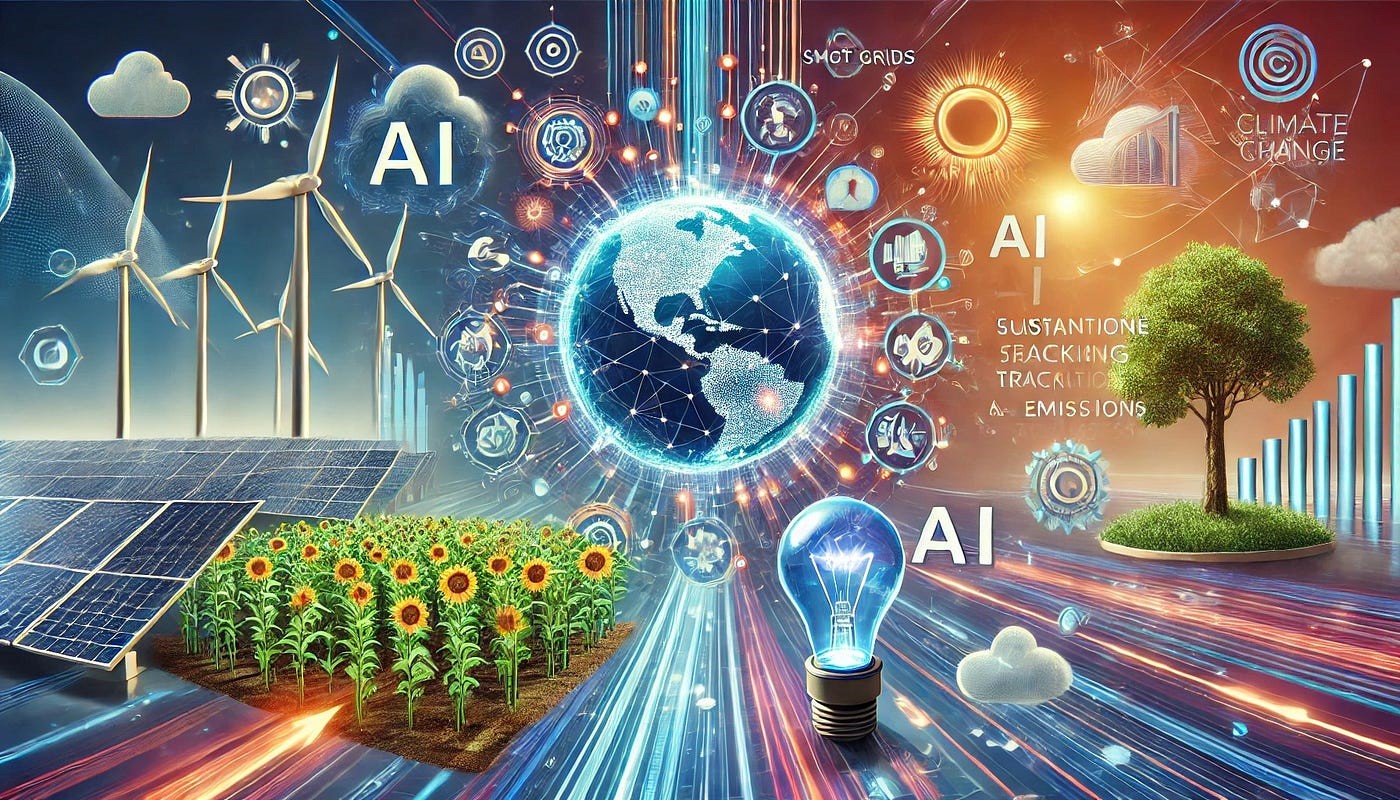Introduction
Climate change remains one of the most pressing challenges of our time, and in 2025, the fight against rising temperatures, extreme weather events, and resource scarcity has taken a new turn with the integration of artificial intelligence (AI). Across the globe, AI is being deployed to monitor ecosystems, reduce emissions, optimize renewable energy, and aid in international climate cooperation.
- Introduction
- AI in Climate Monitoring
- AI for Renewable Energy Optimization
- AI in Carbon Reduction Strategies
- AI and International Climate Cooperation
- AI in Agriculture and Food Security
- AI and Ocean Conservation
- Challenges of AI in Climate Action
- AI and Public Engagement
- The Future of AI in Climate Change Solutions
- FAQs
- Conclusion
At TechTalkDesk.com, we explore how AI is shaping global climate action in 2025, its opportunities, limitations, and how it is helping world leaders craft smarter and faster solutions to protect our planet.
AI in Climate Monitoring
One of AI’s greatest strengths lies in its ability to process massive amounts of data. Climate science generates petabytes of data from satellites, weather stations, and sensors worldwide. AI algorithms can detect patterns in this data, helping scientists predict hurricanes, floods, wildfires, and droughts with far greater accuracy.
For example, AI models in 2025 can forecast extreme weather events weeks in advance, allowing governments to prepare and save lives. This predictive power is becoming central to disaster management and humanitarian aid distribution.
AI for Renewable Energy Optimization
Renewable energy is a cornerstone of climate action, and AI is making it more efficient. Smart grids powered by AI predict energy demand, balance supply, and optimize storage across solar, wind, and hydro systems.
In countries like Germany, Denmark, and Singapore, AI is helping utilities manage fluctuating renewable sources, ensuring consistent energy delivery. By predicting weather changes and consumer energy habits, AI ensures that clean energy doesn’t go to waste.
AI in Carbon Reduction Strategies
Governments and corporations are using AI to track emissions in real time. Satellite images analyzed by AI detect illegal deforestation, methane leaks, and industrial emissions. This technology holds polluters accountable and provides transparency in international agreements like the Paris Climate Accord.
AI also helps industries lower their carbon footprint by recommending more sustainable practices. For instance, shipping companies are using AI to design fuel-efficient routes, while agriculture firms use it to minimize fertilizer use and water waste.
AI and International Climate Cooperation
Climate change is a global issue that requires international cooperation. AI is playing a key role in uniting nations by providing shared data platforms and simulations. AI-driven models allow countries to test scenarios for emission reductions and resource sharing.
In 2025, the United Nations launched an AI-powered “Climate Action Dashboard” that integrates data from over 150 countries, allowing leaders to evaluate global progress and negotiate better policies.
AI in Agriculture and Food Security
Climate change threatens food production, but AI is helping farmers adapt. Precision agriculture powered by AI uses drones and sensors to monitor soil health, predict crop yields, and detect pests early. This ensures better harvests with fewer resources, helping combat food insecurity caused by rising temperatures and droughts.
Countries in Africa, Asia, and Latin America are particularly benefiting, as AI-driven farming systems are improving food security and resilience against climate shocks.
AI and Ocean Conservation
Oceans absorb most of the planet’s heat and carbon dioxide, making them crucial in climate stability. AI is being used to track coral bleaching, illegal fishing, and pollution levels. Autonomous underwater drones powered by AI collect data that would take humans years to analyze.
In 2025, global marine organizations are using AI to protect endangered species and design smarter conservation strategies, ensuring oceans remain a vital line of defense against climate change.
Challenges of AI in Climate Action
While AI is a powerful tool, it’s not without challenges:
-
Energy Consumption: Training large AI models consumes vast amounts of energy, raising questions about its environmental footprint.
-
Data Inequality: Developing countries often lack access to high-quality data, making it harder for them to benefit from AI solutions.
-
Overreliance: Policymakers risk depending too much on AI predictions without considering local realities and human expertise.
-
Ethical Concerns: How data is collected, stored, and shared across countries raises questions about privacy and sovereignty.
AI and Public Engagement
Beyond governments, AI is engaging the public in climate action. AI-powered apps help individuals measure their carbon footprint, suggest eco-friendly lifestyles, and even track sustainable shopping habits. Virtual assistants now guide households on reducing waste, conserving energy, and choosing green alternatives.
By empowering citizens, AI ensures that climate change action doesn’t remain limited to policymakers—it becomes a shared responsibility.
The Future of AI in Climate Change Solutions
Looking ahead, AI will become central to managing the planet’s health. Future advancements may include AI-designed carbon capture technologies, self-healing ecosystems supported by AI robotics, and advanced simulations of global migration patterns caused by climate change.
At TechTalkDesk.com, we emphasize that AI should not be seen as a silver bullet but as a powerful partner. When combined with human innovation, political will, and global cooperation, AI could become the turning point in humanity’s fight against climate change.
FAQs
How does AI help fight climate change?
AI helps by predicting extreme weather, optimizing renewable energy, tracking emissions, and improving global cooperation.
Can AI reduce carbon emissions directly?
Yes. AI-powered monitoring detects emissions in real time, while industrial AI solutions recommend sustainable practices to reduce carbon footprints.
Is AI being used in agriculture to combat climate change?
Yes. AI supports precision agriculture, helping farmers increase yields with fewer resources while adapting to climate challenges.
What are the risks of using AI in climate action?
Risks include high energy use, data inequality, and overreliance on technology at the expense of local expertise.
Can AI support global climate agreements?
Absolutely. AI-driven dashboards and models provide transparency, track commitments, and foster international trust in climate cooperation.
Conclusion
In 2025, AI is emerging as one of the strongest weapons in the fight against climate change. From predicting natural disasters to optimizing renewable energy and supporting international cooperation, its impact is global and transformative.
Yet, challenges such as energy consumption, bias, and unequal access remain. The future will require governments, businesses, and communities to ensure AI is used responsibly and inclusively.
At TechTalkDesk.com, we believe AI’s role in climate change solutions symbolizes the next era of innovation—one where technology and humanity work hand in hand to preserve the planet for future generations.








